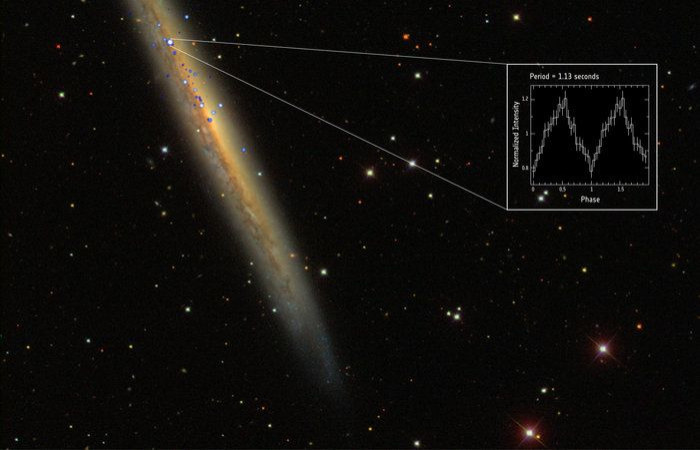NGC 5907 X-1: The Brightest Known Pulsar That Is Also The Most Distant One Ever Detected

Astronomers using the European Space Agency’s (ESA) XMM-Newton space telescope have discovered a pulsar nearly 50 million light-years from Earth. In a study published Monday in the journal Science, a team of researchers stated that not only is this pulsar the farthest one ever detected, it is also the brightest — appearing a thousand times brighter than previously thought possible.
“Before, it was believed that only black holes at least 10 times more massive than our Sun feeding off their stellar companions could achieve such extraordinary luminosities, but the rapid and regular pulsations of this source are the fingerprints of neutron stars and clearly distinguish them from black holes,” lead author Gian Luca Israel from INAF-Osservatorio Astronomico di Roma in Italy, said in a statement released Tuesday.
Pulsars are rapidly rotating neutron stars, which are immensely dense stars created as a result of a massive star collapsing in on itself. As a pulsar rotates, it emits high-energy radiation, similar to a lighthouse casting beams of light. If this beam of high-energy radiation is pointed toward the Earth, the pulses can be detected using telescopes.
This particular pulsar, NGC 5907 X-1 (named after the spiral galaxy it resides in), pulses every 1.13 seconds. When the scientists perused archival data, they found that the pulsar’s spin rate had changed over time, from 1.43 seconds per rotation in 2003 to 1.13 seconds in 2014.
In one second, this pulsar emits the same amount of energy our sun releases in 3.5 years.
“Although it is not unusual for the rotation rate of a neutron star to change, the high rate of change in this case is likely linked to the object rapidly consuming mass from a companion,” the ESA said in the statement.
The researchers believe that there must be a strong, complex magnetic field close to the pulsar’s surface — one that allows accretion onto its surface even as its rotates on its axis every 1.13 seconds, while still generating its high luminosity.
“This object is really challenging our current understanding of the ‘accretion’ process for high-luminosity stars,” Israel said. “It is 1,000 times more luminous than the maximum thought possible for an accreting neutron star, so something else is needed in our models in order to account for the enormous amount of energy released by the object.”
© Copyright IBTimes 2024. All rights reserved.






















